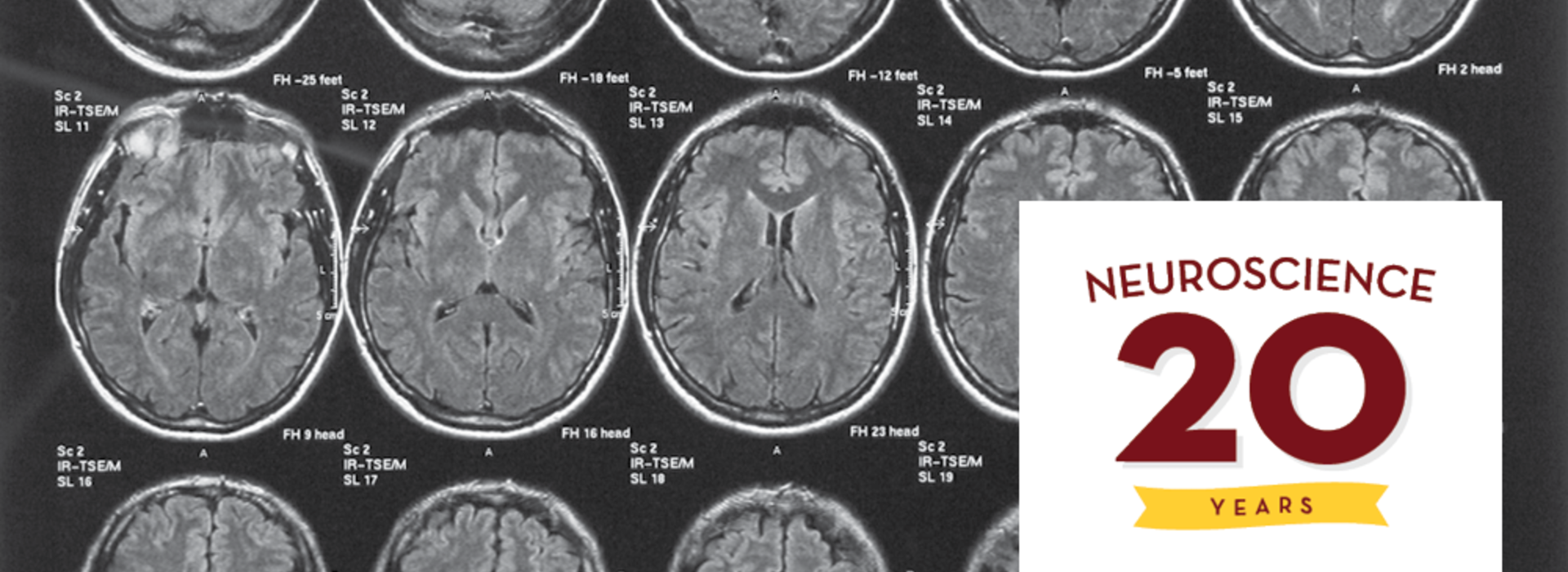
Department of Neuroscience Celebrates 20 Years While Looking Toward the Future
The brain is the foundation for everything that we do. It gives us our personalities, makes decisions, controls our breathing and regulates our emotions. Essentially, it’s what makes us human beings. Yet, there are still countless mysteries about all of its complexities.
In the late 1990s, it became evident that neuroscience was a growing discipline requiring devoted faculty, funding and facilities to progress. Many in the University of Minnesota Medical School were already doing great work, but there was a lack of focus on how to enable future success and augment current efforts in neuroscience. After support from Medical School leadership, Timothy Ebner, MD, PhD, a professor in the Department of Neurosurgery at that time, became the first-ever head of the newly-minted Department of Neuroscience, where he continues to lead today — 20 years later.
“The field had become very mature, and it was clear that it had become a strong, major discipline. Members of the neuroscience community at the University had come together and had formed a graduate program in neuroscience, which started to be successful. After that, this led to the recognition that we needed to make neuroscience its own department. And, departments are important because they are the only unit that can hire faculty. Departments control the destiny of the discipline, and if you don’t have that, you can never ensure what the field will look like in the future,” Dr. Ebner said.
Dr. Ebner has watched the department grow since its inception, but growth isn’t always a linear process.
“We were, at that time, given a path to expand with additional faculty appointments, so we started hiring. Interestingly enough, it was actually a struggle at first. Being a brand new department, we didn’t even have an office. Myself and two staff actually had to work in a lab and sit on lab benches. That’s how it began,” Dr. Ebner said.
Initially, the department brought together faculty from several disciplines, including neurosurgery, pharmacology, cell biology, neuroanatomy and physiology. The idea was to take different groups of faculty with similar research and educational missions and consolidate them into one place to facilitate interaction, collaboration and develop research funding opportunities. From humble beginnings, the department now has 37 faculty and over 50 graduate students fully dedicated to advancing the field of neuroscience.
“Since then, the department has done well. We’ve been fortunate to become leaders in some major initiatives. One was the Institute for Translational Neuroscience and another was the MnDRIVE Brain Conditions. Now, we have the Medical Discovery Team on Addiction and the Medical Discovery Team on Optical Imaging and Brain Sciences. Those have come through the years, and they’ve allowed us to expand dramatically,” Dr. Ebner said.
Research funding was sparse at first — as would be expected for a new department — but last year, the department ranked #8 in the country for the NIH Blue Ridge rankings, demonstrating their success in external funding from the National Institutes of Health for a wide scope of research initiatives focused on neuroscience. At the moment, the department maintains five areas of expertise: addiction neuroscience, pain, neurodegenerative diseases, cognitive and psychiatric disorders and neuron-glia interactions, among many other important topics.
Dr. Ebner says neuroscience research will only continue to become more complex, largely due to technology. While this does create challenges, it also opens opportunities for many in the discipline.
“We know the pace of technological innovation in neuroscience is so dramatic — that’s one of the challenges of the future. How do we keep the faculty and students at the cutting-edge of these technological advancements? These changes bring us the ability to study circuits at multiple scales across the nervous system. We won’t be looking at isolated parts of the brain anymore. We’re looking at it as the whole brain, operating together,” Dr. Ebner said.
Now, celebrating 20 years, the department is in a solid position to make lasting contributions to neuroscience and to translate scientific findings into clinical practice. Dr. Ebner is optimistic about the future and trusts in the department faculty to do just that.
“We have to advance to the point where we understand more than the mechanisms of diseases. We have to develop new and effective therapeutics,” he said. “It’s beginning, but that is where the faculty will need to be as inventive and industrious as possible to start bringing their research to the people who are suffering from both neurological and neuropsychiatric disorders.”